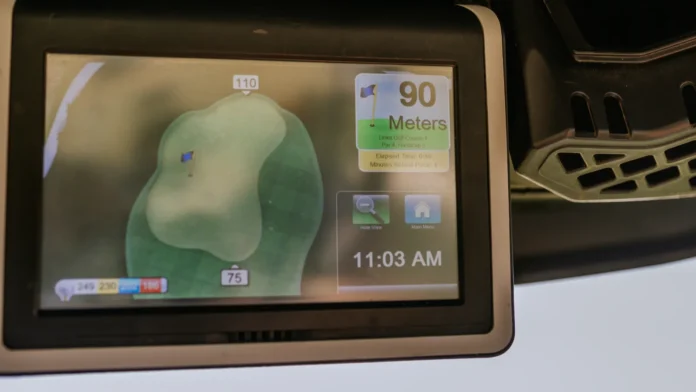
Golf is often viewed as a traditional sport defined by precision, calm focus, and nature’s quiet beauty.
But behind the timeless image of a golfer on the tee, there is a growing wave of technology reshaping how the game is played, learned, and enjoyed.
From radar and sensors to AI-driven tools and smart equipment, innovation is influencing every part of the sport.
This article explores how technology impacts golf performance, what tools are being used, how they help, and what this means for both amateurs and professionals.
Equipment and Club Technology
Driver and Club Head Designs
Modern golf equipment has come a long way from the simple wooden clubs of the past. Today’s club heads are engineered with advanced materials like titanium, carbon composites, and tungsten, designed to maximize distance and accuracy.
Manufacturers now fine-tune the weight distribution, aerodynamics, and face flexibility of clubs to help players achieve greater ball speed and forgiveness. Adjustable drivers and sensor-equipped clubs have given golfers unprecedented control over their equipment.
This innovation provides a measurable performance benefit for most players when compared to older designs. While results can vary depending on skill level, these advancements make it easier to hit longer, straighter, and more consistent shots.

Smart Club Fitting
Club fitting has evolved from an art into a science.
Using launch monitors, radar sensors, and motion data, fitters can now tailor every aspect of a club, from shaft flex and head size to loft and lie angle, to match a player’s swing perfectly. This data-driven approach eliminates guesswork and ensures equipment fits the golfer’s natural motion.
When your clubs are customized to your style, you can reduce mishits, improve consistency, and gain confidence. While results may differ between players, a proper fitting session can help most golfers unlock their potential more efficiently than ever before.
Balls and Other Gear
Golf balls have also advanced with technology.
Modern designs use multi-layer construction and aerodynamic dimples to manage spin, flight, and control. High-end balls are engineered to optimize distance off the tee while maintaining precision around the greens.
When combined with data-based fitting and smart clubs, the right ball can make a noticeable difference in your overall game. Choosing a ball that complements your swing and club type helps maintain balance between distance, accuracy, and feel.
Why This Matters for Performance
Optimized equipment means golfers spend less time fighting their gear and more time focusing on technique.
A properly fitted club and ball setup can help minimize mistakes and lead to improved scoring consistency.
While technology cannot replace skill, it amplifies the player’s ability to perform at their best by aligning the equipment with their unique strengths.
Training, Instruction, and Analytics
Swing Analysis Tools
Technology has revolutionized how players and coaches analyze swings.
High-speed cameras, radar systems, and motion-capture sensors record every aspect of a player’s movement. Systems like TrackMan now measure more than 40 swing parameters, including club speed, spin rate, launch angle, and attack path.
These metrics help instructors diagnose inefficiencies and track improvements with precision. Instead of relying on feel or visual estimation, players can now see detailed, real-time data to guide their training sessions.
AI and Personalized Training
Artificial intelligence has become a powerful training companion.
Many golf simulators and mobile apps now use AI to analyze swings, provide personalized drills, and deliver instant feedback. These systems can track progress over time and adapt training plans as players improve.
For example, modern AI-powered golf platforms recommend specific drills based on real performance data. Rather than practicing blindly, golfers can focus on targeted areas such as tempo, club path, or face alignment. This helps players train smarter, not just harder.
Course and Shot Strategy Technology
Technology is also transforming how golfers think about strategy.
Smart systems and golf apps can analyze distance, elevation, wind speed, and terrain to recommend the ideal club or shot type. Some advanced tools act like virtual caddies, helping players make informed decisions during rounds.
These strategy aids encourage better course management by highlighting the safest and most efficient play options. While performance results depend on execution, the added insight leads to smarter decisions and increased confidence.
Instruction Shift from Art to Science
Golf coaching has evolved from intuition-based instruction to a data-supported discipline.
Coaches now rely on evidence gathered from swing monitors, biomechanics sensors, and video analysis to personalize lessons. This shift bridges the gap between art and science.
Data does not replace a coach’s experience, but it strengthens their ability to provide accurate feedback and measurable progress. The result is a teaching method that blends human expertise with technological precision.
On-Course Technology and Game Management
GPS, Lasers, and Rangefinders
During play, technology continues to play a major role.
Devices like GPS watches, laser rangefinders, and smart distance-measuring tools provide golfers with accurate yardages to the flag, hazards, and fairways. These systems help players make better club selections and manage the course more effectively.
By giving golfers exact distances and course layouts, these tools speed up decision-making and improve confidence over shots. While they do not automatically guarantee better scores, they reduce uncertainty and enhance consistency.
Launch Monitors and Shot Feedback
Portable launch monitors have brought advanced feedback directly to the practice range or course.
Players can hit a shot, instantly see data such as ball speed, spin rate, and launch angle, and make real-time adjustments.
This closes the gap between practice and live performance, as golfers can correct issues immediately instead of waiting for post-round analysis. Continuous feedback helps players apply lessons more effectively and build confidence under real conditions.
Data Integration and Performance Tracking
Many players now log every round using apps or wearable sensors.
Systems like Arccos track shot-by-shot data, club selection, and accuracy. Over time, this creates a detailed performance profile showing strengths and weaknesses.
By analyzing this information, golfers can identify problem areas, such as bunker play or putting, and target them in practice. This data-driven approach ensures training time is spent on the most impactful aspects of performance.
Psychological and Pace Effects
Technology has psychological benefits, too.
Studies show that while devices like rangefinders and GPS units may not always lead to dramatic score improvements, they do enhance the pace of play and increase player confidence.
Golfers feel more comfortable and focused when they trust their information and tools. The key is to use technology as a guide, not a crutch. Maintaining balance between data reliance and instinct keeps players sharp both mentally and physically.

Frequently Asked Questions
Q1: Does technology replace good technique in golf?
No. Technology enhances skill development but never replaces fundamentals. Golfers still need strong mechanics, focus, and discipline. Tech tools help identify flaws and accelerate improvement, but cannot substitute for practice and proper instruction.
Q2: Is expensive golf technology worth it for amateurs?
It depends on personal goals and commitment. Casual golfers may not benefit from top-tier equipment, but players seeking improvement can gain from professional club fitting or using swing analysis tools. Even moderate investments in technology can lead to noticeable progress if used consistently.
Q3: Can technology cause over-reliance?
Yes. Relying too heavily on gadgets can distract players from developing intuition and rhythm. Research shows that while automation can improve pace and confidence, it may have mixed effects on actual scores. Balance is essential; use tech as a helper, not a replacement for awareness and judgment.
Q4: Are there rules about golf technology?
Yes. The United States Golf Association (USGA) and the Royal and Ancient Golf Club of St Andrews (R&A) regulate what types of technology are allowed. Equipment or devices that give an unfair advantage, such as non-conforming clubs or measuring aids, are restricted in official play. Golfers should ensure all equipment meets current standards.
Q5: How can beginners use technology without feeling overwhelmed?
Start small. Use a swing-analysis app or launch monitor to focus on two or three key metrics, like club path or contact consistency. Try a GPS device to improve distance control. Then, work on one area at a time rather than tracking every data point. This focused approach helps build confidence without confusion.
Conclusion
- Technology has transformed golf by improving training, coaching, and gameplay, giving players tools to understand and enhance every part of performance.
- Data-driven equipment and AI-based analysis allow golfers to optimize their swings, strategy, and decision-making.
- Smart fitting, advanced materials, and digital feedback bridge the gap between amateur and professional play.
- However, true success still relies on fundamentals, consistent practice, strong focus, and sound technique.
- The best results come when technology is used wisely: as a guide, not a shortcut.
- When your equipment fits, your swing is understood, and your strategy is data-informed, you play with confidence and joy.
Read More
- How Augusta National Became Golf’s Holy Ground
- The Most Iconic Golf Celebrations of All Time
- The Best Golf Shots Ever Captured on Camera
This article was made with AI assistance and human editing.



